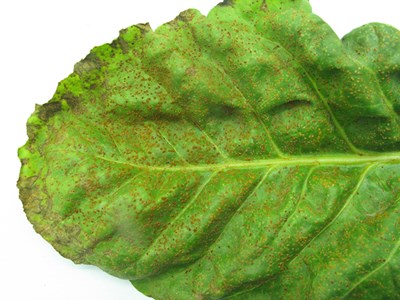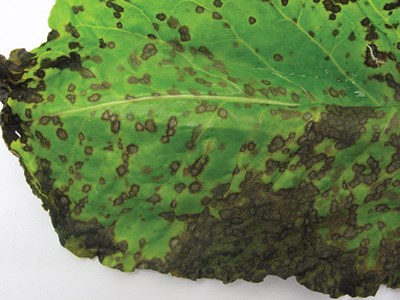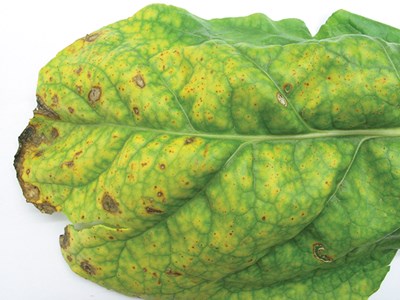Wednesday, 12 December 2018
Time to focus on fungicides for fodder beet
With all the hard work that goes into establishing a fodder beet crop now firmly in the rearview mirror, focus turns to ensuring your crop can reach its full potential.
As we move into summer, fungal diseases can have an impact on your crop’s performance. While nitrogen drives canopy growth, fungicides help maintain the canopy and aid green leaf retention. The ability to maintain the canopy is important, because if energy needs to be directed into growing new leaves it will be to the detriment of bulb growth. A further benefit is that if green leaf area is maintained through autumn, the bulb will have some early frost protection. In addition, both overseas and local trial work shows an economic response can be obtained from use of fungicides in fodder beet.
What am I seeing in my crop?
As the crop grows rapidly through the row closure stages, the environment becomes favourable for fungal diseases such as:
- Powdery mildew – the white powdery mycelia visible on leaf surfaces, spread by wind, likes warm conditions (25°C) and low humidity. It attacks leaves aged six to eight weeks old on the upper surface.
- Beet rust - small yellowish-orange to reddish-brown pustules on upper and lower surfaces of leaves. Beet rust likes more moderate temperatures (15-22°C) and dewy moist conditions. It can be spread by wind, rain splash, insects, equipment and workers.
- Cercospora - this is one of the more destructive foliar diseases in fodder beet. It is characterised by oval-shaped lesions with a grey centre and dark margins. This disease loves warm and humid conditions (25°C and above) and is spread by rain splash, wind, insects, equipment and workers.
- Ramularia leaf spot - this shows as light brown spots sized 4-7mm in diameter, more angular than Cercospora. This disease thrives in 17-20°C temperatures and is spread by rain splash and wind.
Other diseases you may be seeing:
- This season the cooler moist weather in Canterbury has seen downy mildew in early sown crops. Unfortunately, there is no fungicide that is effective on downy mildew registered for use in fodder beet.
- Leaf yellowing may be associated with Beet Western Yellows Virus (BWYV). Unfortunately, there is no cure for BWYV, just preventive measures to limit infection and spread by vectors like aphids.
There are cultural practices than can help manage these diseases, such as good crop rotation and hygiene execution, choosing tolerant cultivars, establishing an appropriate plant population and not applying excessive amounts of fertiliser or irrigation.
These practices combined with a timely application of an effective fungicide can help control fungal diseases and prevent further development.
Fungicides currently registered for disease control in fodder beet in New Zealand include Beetrizole, Escolta and Mondo. These combine the effectiveness of two active ingredients, trifloxystrobin and cyproconazole, which are from different chemical groups with different modes of action and are registered for the control of Powdery Mildew, Beet Rust, Cercospora and Ramularia leaf spot.
These treatments are best applied early in the disease cycle when conditions favour disease development but before diseases have become well-established. A repeat application is possible any time from three weeks following the initial application.
If you are seeing early signs of disease infection, it makes good economic sense to protect your investment with one to two fungicide applications to ensure the crop finishes as well as it can.



